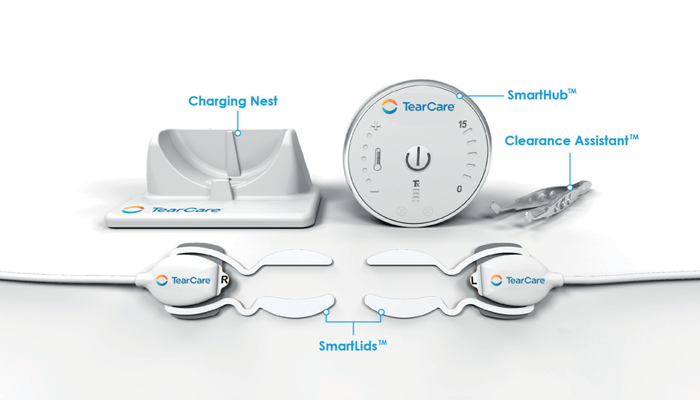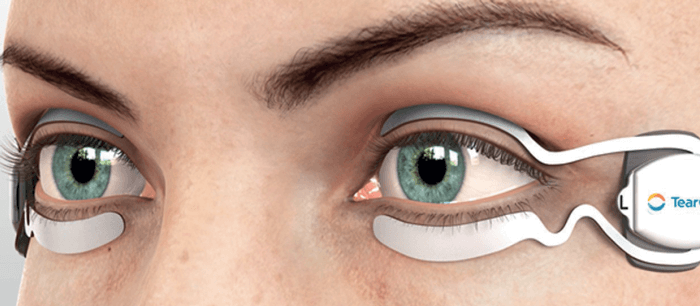
Most eye care providers acknowledge and treat inflammatory dry eye with prescription medications; relatively few of those providers use specific methods to address obstructive meibomian gland dysfunction (MGD), which affects 86 percent of dry eye patients in the US (1). Obstructive Meibomian glands result in reduced meibum secretion and a compromised tear lipid layer that causes accelerated tear evaporation.
Traditionally, practitioners have advised MGD, dry eye disease (DED), and blepharitis patients to use warm compresses – but an optimal effect on obstructed glands cannot be achieved with a warm compress or anti-inflammatory drugs. Active heating at a precisely-measured temperature – and successful evacuation of meibum from the glands – are key aspects of effective care.
Enter two brothers – David Badawi, corneal specialist in Chicago, Illinois, and Paul Badawi, a former NIH scientist based in Menlo Park, California – who worked together to develop TearCare® – an intelligent device designed for patients suffering from conditions such as MGD. The wearable and fully customizable technology helps deliver the right levels of thermal energy to the eyelids – all while allowing patients to keep their eyes open and blink.
The TearCare system from Sight Sciences is composed of four elements: a reusable, software-driven SmartHub, which generates electrothermal energy; a SmartHub charging nest; a single-use treatment assembly, with a flexible pair of eyelid devices – SmartLids – that conform to each patient’s eyelids; and a sterile, single-use meibum Clearance Assistant instrument. The SmartLids feature multiple temperature sensors, which communicate with the SmartHub 240 times times per second to make sure the thermal therapy is closely controlled and consistent throughout the procedure. Notably, temperature can be manually lowered at any point.
TearCare enables tight control of eyelid temperature (up to 45°C) for 15 minutes, making it the first and only non-invasive technology that delivers heat to the outside of the eyelid while achieving the 41°C inner eyelid temperature required to sufficiently liquify hardened meibum and aid in the clearance of gland obstructions. After the thermal therapy, the ophthalmologist removes the SmartLids and uses the Clearance Assistant forcep to gently but thoroughly evacuate the unhealthy meibum from the glands.
TearCare can be used during a normal office visit, and can be repeated as often as needed over time, providing eye care professionals with a technologically-advanced and automated tool that addresses their patients’ obstructive MGD – with pricing that allows all interested practices to become engaged in advanced dry eye care.
Right now, TearCare is commercially available in the US with limited insurance coverage based on CPT code (0563T). Assistance with insurance submissions is available through the Sight Sciences reimbursement team.

References
- MA Lemp et al., “Distribution of aqueous-deficient and evaporative dry eye in a clinic-based patient cohort: a retrospective study,” Cornea, 31, 472 (2012). PMID: 22378109.
